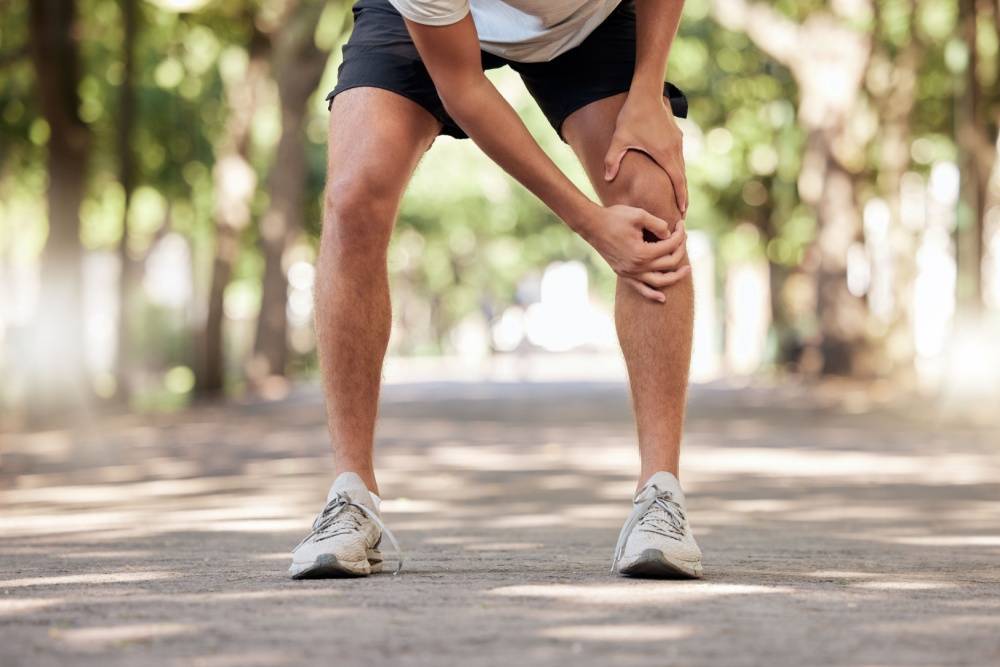Running is a fantastic way to stay fit and healthy, but if not done correctly, it can also lead to knee pain.
Many runners experience discomfort or injury due to common mistakes in their running technique, footwear, or training routine. Understanding these pitfalls can help you prevent knee pain and enjoy a more sustainable and enjoyable running experience.
Common Mistakes Leading to Knee Pain
1. Poor Running Form
One of the primary causes of knee pain among runners is poor running form. Incorrect posture, such as leaning too far forward or backwards, can put undue stress on your knees.
- Solution: Focus on running upright, keeping your shoulders relaxed and your gaze forward. Ensure your feet land directly underneath your hips to maintain a natural stride.
2. Inadequate Footwear
Wearing the wrong type of running shoes can exacerbate knee pain. Shoes that lack proper support or are worn out can lead to improper foot alignment and increased knee strain.
- Solution: Invest in quality running shoes that provide adequate support and cushioning. Visit a specialty running store for a gait analysis to find the best shoe for your running style.
3. Overtraining
Increasing your mileage or intensity too quickly can lead to overuse injuries, including knee pain. The body needs time to adapt to increased physical demands.
- Solution: Follow the 10% rule, which suggests increasing your weekly mileage by no more than 10%. Incorporate rest days and cross-training into your routine to give your knees a break.
Specific Issues and How to Address Them
1. Weak Hip and Glute Muscles
Weakness in the hip and glute muscles can cause the knees to bear more stress during running, leading to pain and injury.
- Solution: Incorporate strength training exercises, such as squats, lunges, and hip bridges, into your routine to build strength in these areas.
2. Improper Warm-Up and Cool-Down
Skipping warm-ups and cool-downs can make your muscles and joints more prone to injury. Proper preparation and recovery are crucial for preventing knee pain.
- Solution: Begin each run with a dynamic warm-up, including exercises like leg swings and high knees. Finish with a cool-down that includes gentle stretching, focusing on the quadriceps, hamstrings, and calves.
3. Running on Hard Surfaces
Consistently running on hard surfaces, such as concrete or asphalt, can increase the impact on your knees, leading to pain and discomfort.
- Solution: Try to vary your running surfaces by incorporating trails, grass, or a treadmill into your routine. These softer surfaces can reduce the impact on your knees.
Identifying and Treating Knee Pain
1. Recognising the Signs
It’s essential to recognise the early signs of knee pain and address them promptly to prevent further injury.
- Common Symptoms: Swelling, tenderness, stiffness, or a clicking noise in the knee. Persistent pain during or after running should not be ignored.
2. Seeking Professional Help
If knee pain persists despite adjusting your running routine, seeking professional help is crucial. Ignoring the pain can lead to more severe injuries.
- Solution: Consult a physical therapist or sports medicine specialist who can provide a personalised assessment and treatment plan. They can help identify underlying issues and recommend appropriate interventions.
Conclusion
Knee pain doesn’t have to be an inevitable part of your running journey. By addressing common mistakes and making necessary adjustments to your form, footwear, and training regimen, you can run pain-free and enjoy the many benefits of this popular exercise.
If your knee pain persists despite these changes, consider seeing a knee specialist for a thorough evaluation and tailored treatment.
Remember, taking proactive steps now can prevent more significant problems, ensuring you stay healthy and active for years.
Have a pressing question for a doctor? Medical Channel Asia has launched a community forum page where you can get questions answered by a medical specialist. Visit the community forum here.

